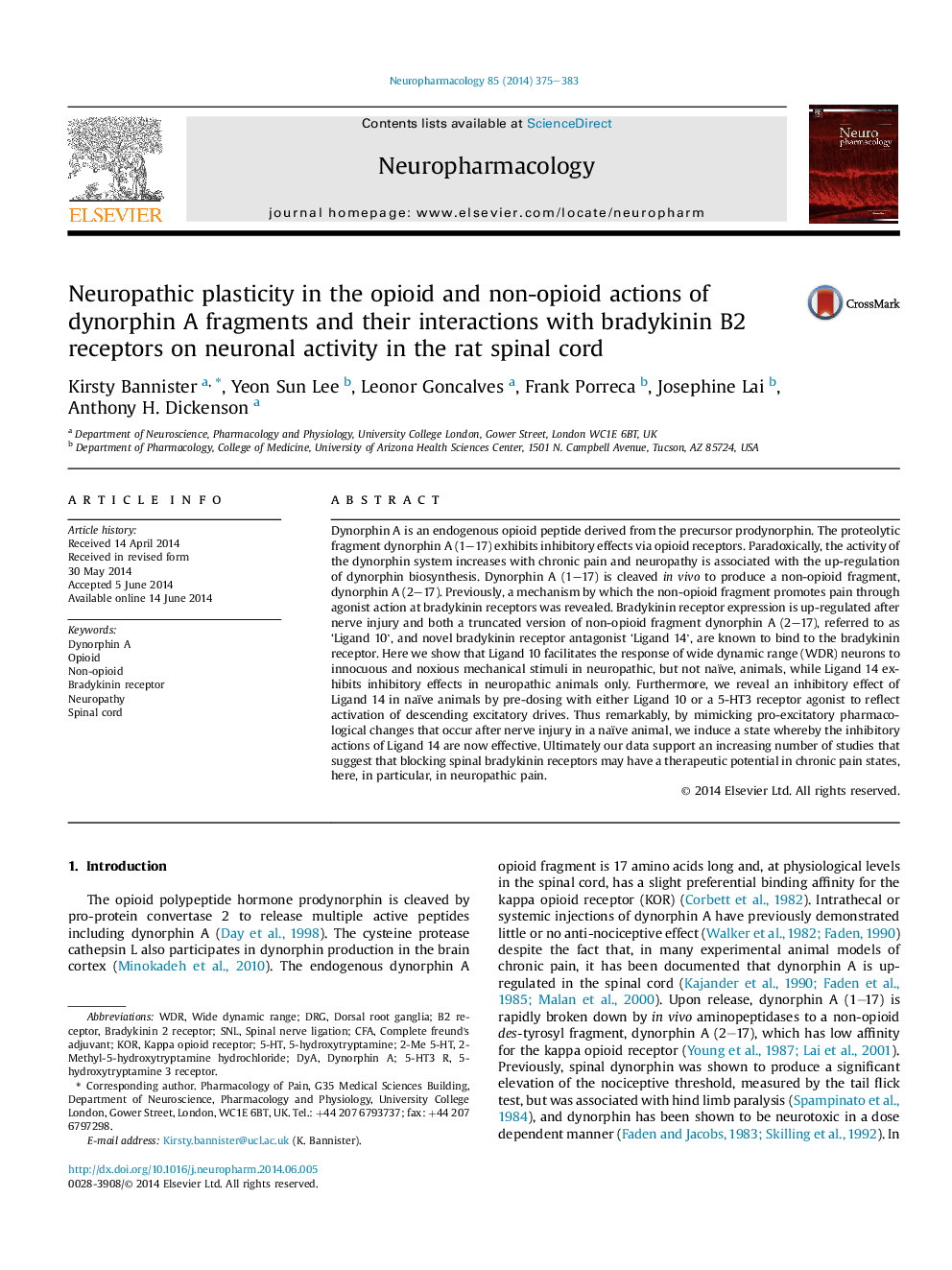| کد مقاله | کد نشریه | سال انتشار | مقاله انگلیسی | نسخه تمام متن |
|---|---|---|---|---|
| 5814447 | 1556629 | 2014 | 9 صفحه PDF | دانلود رایگان |
عنوان انگلیسی مقاله ISI
Neuropathic plasticity in the opioid and non-opioid actions of dynorphin A fragments and their interactions with bradykinin B2 receptors on neuronal activity in the rat spinal cord
دانلود مقاله + سفارش ترجمه
دانلود مقاله ISI انگلیسی
رایگان برای ایرانیان
کلمات کلیدی
CFADRG5-hydroxytryptamineSNL5-HTBradykinin 2 receptorWDRcomplete Freund's adjuvant - adjuvant دوست کاملOpioid - opioidDynorphin A - دینورفین ASpinal cord - طناب نخاعیwide dynamic range - طیف گسترده ای پویاNon-opioid - غیر افیونیNeuropathy - نوروپاتیKOR - وقتیspinal nerve ligation - پیوند عصب ستون فقراتdorsal root ganglia - گانگلیس ریشه پشتیB2 receptor - گیرنده B2Bradykinin receptor - گیرنده Bradykininkappa opioid receptor - گیرنده اپوئیدی کاپاپ
موضوعات مرتبط
علوم زیستی و بیوفناوری
علم عصب شناسی
علوم اعصاب رفتاری
پیش نمایش صفحه اول مقاله

چکیده انگلیسی
Dynorphin A is an endogenous opioid peptide derived from the precursor prodynorphin. The proteolytic fragment dynorphin A (1-17) exhibits inhibitory effects via opioid receptors. Paradoxically, the activity of the dynorphin system increases with chronic pain and neuropathy is associated with the up-regulation of dynorphin biosynthesis. Dynorphin A (1-17) is cleaved in vivo to produce a non-opioid fragment, dynorphin A (2-17). Previously, a mechanism by which the non-opioid fragment promotes pain through agonist action at bradykinin receptors was revealed. Bradykinin receptor expression is up-regulated after nerve injury and both a truncated version of non-opioid fragment dynorphin A (2-17), referred to as 'Ligand 10', and novel bradykinin receptor antagonist 'Ligand 14', are known to bind to the bradykinin receptor. Here we show that Ligand 10 facilitates the response of wide dynamic range (WDR) neurons to innocuous and noxious mechanical stimuli in neuropathic, but not naïve, animals, while Ligand 14 exhibits inhibitory effects in neuropathic animals only. Furthermore, we reveal an inhibitory effect of Ligand 14 in naïve animals by pre-dosing with either Ligand 10 or a 5-HT3 receptor agonist to reflect activation of descending excitatory drives. Thus remarkably, by mimicking pro-excitatory pharmacological changes that occur after nerve injury in a naïve animal, we induce a state whereby the inhibitory actions of Ligand 14 are now effective. Ultimately our data support an increasing number of studies that suggest that blocking spinal bradykinin receptors may have a therapeutic potential in chronic pain states, here, in particular, in neuropathic pain.
ناشر
Database: Elsevier - ScienceDirect (ساینس دایرکت)
Journal: Neuropharmacology - Volume 85, October 2014, Pages 375-383
Journal: Neuropharmacology - Volume 85, October 2014, Pages 375-383
نویسندگان
Kirsty Bannister, Yeon Sun Lee, Leonor Goncalves, Frank Porreca, Josephine Lai, Anthony H. Dickenson,